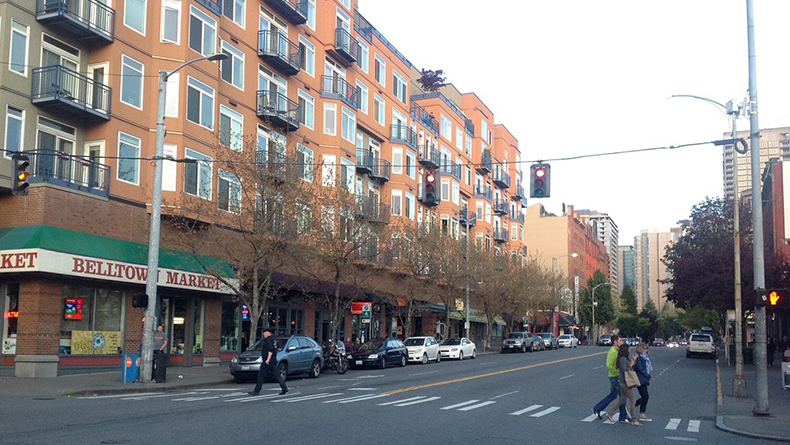AARP Hearing Center
COVID-19 Calls Attention to Housing Challenges—and Solutions
By Rodney Harrell, Shannon Guzman, April 24, 2020 08:30 AM

In the face of the outbreak, AARP is providing information and resources to help older people and those caring for them protect themselves from the virus and prevent it from spreading to others. You can find AARP's coronavirus resources at www.aarp.org/coronavirus.
While scientists, policy makers, health officials, and others fight COVID-19 and its societal impacts, they don’t do so in a vacuum. The pandemic, in fact, has left certain matters all too intact—specifically, socioeconomic challenges we have long faced.
COVID-19 stands to exacerbate these issues, potentially even adding to the complexity of addressing them. Disparities in health care, economic opportunity, food access, and other areas mean that some communities and populations face an uphill battle in fighting the pandemic, with evidence emerging that the virus’ impacts are concentrated in certain places.
No question, the pandemic is illuminating a host of perennial issues. In addition to those already mentioned—and all are connected—is housing, and the communities where we live. Yet the pandemic is doing more than just spotlight the issue. It may be shedding a ray of light on longer-term housing and community solutions.
Existing Challenge Magnified
Housing challenges have been with us for decades. Almost one-third of US households (38 million) are paying more than 30 percent of their income on housing, making them “housing cost-burdened,” and the vast majority of all of our housing does not have the accessibility features that can help to keep us safe in our homes.
The pandemic has made affordability even more of a pressing challenge than it already was. With an unprecedented unemployment spike and more job losses to come, a surge in missed mortgage and rental payments has become an increased threat. Encouragingly, this has led public officials to take such actions as instituting foreclosure and rent moratoria. Income supplements such as the well-publicized stimulus checks can also help in the housing arena.
Related to affordability is homelessness. For those who had no stable housing before the crisis began, the immediate effects are even tougher, even at a time when the homelessness of older individuals is a growing concern. Shelters make social distancing difficult if not impossible, while regular handwashing without a sink of your own is difficult, at best.
Current fixes are only a start. While the recent CARES Act placed a 120-day moratorium on evictions from federally financed housing, that provision covers less than 30 percent of all rental units in the country, and individual states and localities may or may not have additional protections in place. This patchwork of policies not only can be confusing to consumers, it ultimately leaves gaps that will lead to future instability.
Some solutions include needed short-term responses, while others may point toward longer-term fixes. A national policy on evictions and foreclosures that covers all residents, combined with additional national funding for emergency rental assistance and eviction prevention (which may be expended through existing programs), as well as preserving affordable housing options, would begin to address housing affordability issues. Such actions both address the crisis right now, and also build a foundation to start us on a future path.
Hotspots (for the Most Vulnerable)
Finally, it’s important to understand how the crisis has hit some communities harder than others—again, thanks to preexisting challenges. A combination of polices and behaviors over the decades have contributed to our separated housing patterns. The end result is that certain populations (e.g., African-Americans and communities of color) are often located in areas without access to vital features and services and where virus-related risks may be higher. As the situation evolves, many demographic groups, such as those in rural communities who are already burdened with underlying disparities, will experience similar trends.
We can understand, measure, and address these disparities through approaches that look at various factors in combination (e.g., housing, transportation, health care access, etc.) for a given area and considering neighborhood-level impact of those disparities. Just as the problems were present before the pandemic, so were many of the tools to do so. One example is the AARP Livability Index, which takes a neighborhood approach in presenting data to make disparities clear, considering access to health care and many other factors that impact communities disproportionately.
Thus, past, present, and future are inextricably linked. While the virus is everyone’s problem and national strategies are needed, we must pay close attention to the communities hardest hit. That will allow us to ensure we implement policies to both address the impacts of the current crisis and make future ones less severe, particularly on the people and communities that can least afford it. Many housing organizations have already started this process. After the immediacy of the health issues, this situation can be an opportunity to consider long-term solutions to a variety of challenges, including those facing homes and communities.
The French have a telling phrase - mis en place. It refers to the importance of getting everything in a kitchen in place before the cooking starts. COVID-19 already has enveloped us. But it can also mark a beginning. It can be an opportunity to ready the kitchen for future work—to avoid as many of the foreseeable problems as we can, and even solve some of the perennial ones.

































































